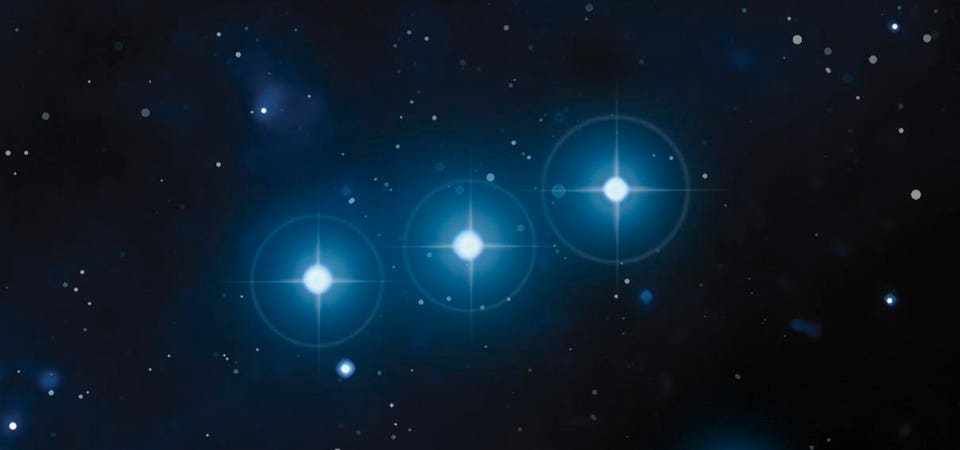Orion’s Belt will look fabulous this week. Each Monday, I pick out North America’s celestial highlights for the week ahead (which also apply to mid-northern latitudes in the northern hemisphere), but be sure to check my main feed for more in-depth articles on stargazing, astronomy, eclipses and more. The Night Sky This Week: January 15-21, 2024 The early evening skies are relatively bright this week as the moon waxes towards a full moon next week.
However, you’ll still easily find the most brilliant shapes and constellations of winter—such as Orion’s Belt—but it’s n excellent opportunity to follow the moon’s progress, and allow it to lead you to Jupiter. Here’s everything you need to know about stargazing and astronomy this week: Wednesday, January 17: First Quarter Moon Today, our natural satellite in space reaches its First Quarter stage, when is appears to be half-lit as seen from the surface of Earth. The moon is always half-lit by the sun and has no permanent dark side, as some people think—what we see from Earth is merely a matter of perspective.
Thursday, January 18: Moon And Jupiter Look high in the south after dark and see a bright waxing gibbous moon. You’ll see the giant planet Jupiter less than three degrees below it. Although it’s now a few months past its brilliant opposition, Jupiter is still 99%-lit by the sun, so it’s a great time to put a pair of binoculars or a small telescope on it.
Saturday, January 20: Moon And Pleiades Saturday, January 20: Moon And Pleiades In something of a warm-up to what’s going to happen several times this year, a waxing gibbous moon will tonight slide very close to the Pleiades—also known as the “Seven Sisters” and M45—an open cluster in the constellation Taurus. Asterism Of The Week: Orion’s Belt. (Photo by: Alan Dyer/VW PICS/Universal Images Group via Getty .
. . [+] Images) Asterism Of The Week: Orion’s Belt Follow the moon this week, and it will lead you to the iconic winter constellation of Orion, now looking its best in the southeast right after dark.
However, it’s still rising, so its most famous shape, Orion’s Belt, is somewhat on its side. The “Three Kings”—Alnitak, Alnilam and Mintaka—are all blue supergiant stars. Orion’s Belt is an asterism (shape) within the constellation Orion.
Perseid meteors streak over sky on August 13, 2021 in Golog Tibetan Autonomous Prefecture, Qinghai . . .
[+] Province of China. (Photo by Jia Jiqian/VCG via Getty Images) Sky-Watching Date For Your Diary: August’s Perseid Meteor Shower If you don’t want to miss the year’s biggest and best display of meteors overnight on August 12/13, then book a few days off work and stay somewhere rural. Think camping in a national park, glamping or an RV adventure.
If you don’t like the sound of standing around for hours getting cold, then find somewhere with an outdoor hot tub (my tried-and-tested way of watching for “shooting stars” without getting a neck ache/cold/frustrated!). Now is a great time to find somewhere and book it before everyone else. After all, it is August.
The times and dates given apply to mid-northern latitudes. For the most accurate location-specific information, consult online planetariums like Stellarium and The Sky Live . Check planet-rise/planet-set , sunrise/sunset and moonrise/moonset times for where you are.
I’m an expert on the night sky and author of Stargazing In 2024: 50 Easy Things To See In The Night Sky From North America . For the very latest on sky events and the total solar eclipse please subscribe or check my main feed regularly for new articles. Wishing you clear skies and wide eyes.
.
From: forbes
URL: https://www.forbes.com/sites/jamiecartereurope/2024/01/14/moon-meets-jupiter-as-orions-belt-glows-the-night-sky-this-week/
